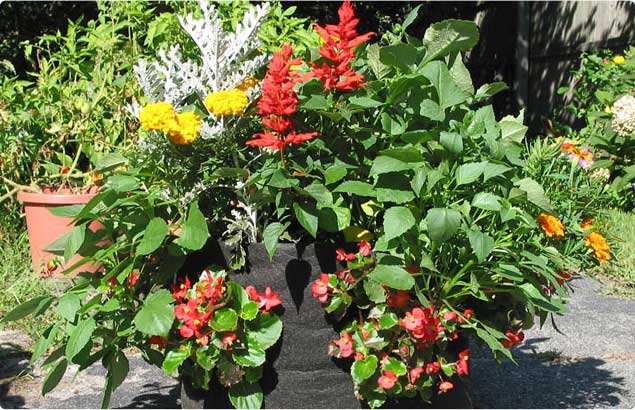Extend the Smart Pot Season
Plant fast-growing crops to extend the season
Gardeners with large vegetable beds often take extraordinary steps to extend their gardening season. They build low tunnels, design special covers and use other methods to help keep the garden going in cold weather.
Small-space gardeners can get more from their vegetable gardens, too. One way is to plant fast-growing crops in Smart Pots.
It’s easy to transition Smart Pots from summer to fall by planting cool-weather crops at the right time and by using a few simple planting tricks.
Even when it still seems like summer, it’s time to plan for a fall harvest. The most important date to keep in mind is the average date for the first killing frost in your area. That’s the typical time when temperatures drop to about 25 degrees Fahrenheit.
Next, find the number of days it takes for cool-season roots, shoots and leaves to grow. Picture baby carrots, scallions, beets, turnips, peas, spinach, kale, chard, lettuces and radishes. Look for your favorites with the fewest days until harvest. Some types of radishes can be ready to eat 30 days from planting; spinach leaves can be snipped for snacking in about 40 days.
Now count back the number of growing days from the average date of the first killing frost and start planting.
You can plant seeds or transplants, such as broccoli, cauliflower and cabbages. There are many other cool-season offerings and some have an even longer season. Parsnips and kale are two vegetables that get sweeter as they grow in cold weather.
For easiest planting, clear your Smart Pots of any summer crops that are past their prime and make sure the containers are weed free. Loosen the soil to a depth of about 6-8 inches and prepare a smooth surface for planting. If temperatures are high, moisten the soil before planting.
Another trick for hot weather is to plant seeds a bit deeper than recommended for spring. Planting deeper keeps seeds from drying out too quickly, and a thin layer of light mulch can protect seeds and sprouts as they start growing.
Keep the soil moist with deep and consistent watering. If the soil from summer was fertilized, the fall planting may do fine without additional fertilizer. However, a light fertilizing may give plant roots a boost for a faster start.
Be sure to enjoy this extra season of vegetables as soon as plants begin producing. Don’t panic when temperatures take a dip. Vegetables like beets, lettuces and carrots can tolerate a light frost; cabbages, turnips and broccoli can even stand up to a hard frost.
Keep the season growing by covering plants at night with row cover cloth, old sheets or plastic milk jugs. Instead of letting cooler weather put an end to gardening, fast-growing fall crops mean more fresh harvests in the future.






